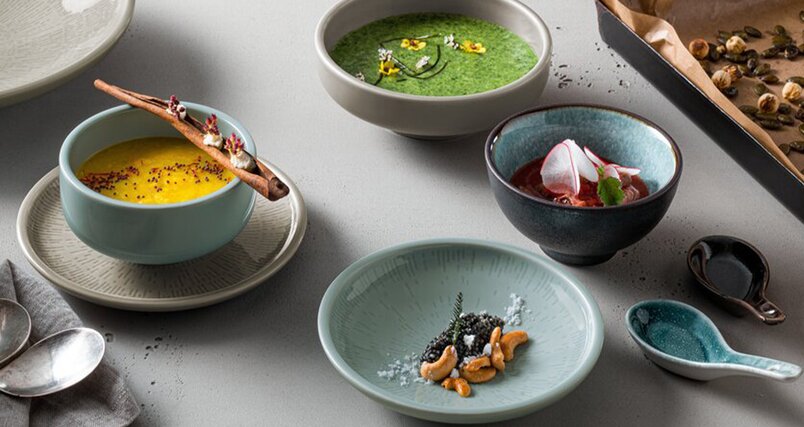Gastronomy thrives on refinements and unusual ingredients. With the new toppings food trend, tried-and-tested dishes are given a special flavor note as well as an unusual texture and appealing look. Both toppings themselves and the dishes that are suited for them are enormously diverse.
What are toppings?
The term "topping" derives from "on the top" and refers to any ingredient sprinkled or placed on a dish to enhance its flavor and create textures.
A classic with toppings that enjoys great popularity is creemee. Add different types of chocolate, sauces, nuts, brittle or fruit to give the popular dessert a new flavor and look. Since their discovery, the culinary era of toppings has been embraced in just about every country and expanded to more dishes.
Toppings are now not only found on desserts, but more and more savory dishes are also being "topped" with delicious ingredients and thus reinterpreted. In snack bars, for example, you can now find fries not only with the classic ketchup or mayo, but also with a range of diverse toppings such as sour cream, chives, herbs, avocado, cheese, cilantro or bacon.
In restaurants, too, restaurateurs are refining salads and bowls with delicious toppings such as pumpkin cubes, nuts, sesame seeds or quinoa, thereby inventing new culinary creations. There are no limits to your imagination – food toppings can be used with a wide variety of sweet or savory dishes or even beverages.
What are the advantages of toppings?
Toppings deliver both aesthetic and taste benefits. "You eat with your eyes first" – toppings therefore serve on the one hand as appealing food decoration and on the other hand amplify the taste of established dishes. Thus, guests enjoy new flavors and more culinary variety. Last but not least, a psychological factor comes into play: Guests get the impression of getting more for their money.
What dishes are suitable for toppings?
The basic principle of culinary arts is to combine different flavors or textures, such as sweet with sour or salty, creamy with crunchy, or frozen with melted. This can be achieved very easily by choosing the right toppings. Not only "chunky" toppings are possible – liquid toppings in the form of sauces or purees also add a new touch to dishes and beverages.
The following dishes offer potential for toppings:
- Desserts: milk ice cream, sorbets, (frozen) yogurt, waffles, crepes, donuts, muffins, cakes, pies, chocolates, smoothie bowls, puddings, rice pudding, semolina porridge, cereals, porridge, fruit
- Savory dishes: salads, bowls, pasta, soups, ramen, burgers, wraps, sandwiches, lángos, baked potatoes, sweet potatoes, fries, raclette
Beverages: milk shakes, smoothies, coffee specialties
These ingredients make great toppings:
- Sweet toppings: cookie crumbs, cookies, (cane) sugar, colored sugar sprinkles, chocolate sprinkles, chocolate chips, chocolate lentils, brittle, fresh fruit cubes, dried fruit, fruits, berries, applesauce, buttercream, whipped cream, pudding, milk foam, cocoa powder, cinnamon.
- Savory toppings: croutons, raw or fried vegetable cubes, dried tomatoes, herbs such as chives, parsley, rosemary, thyme or coriander, curd, cream, sour cream, crème fraîche, cheese
Neutral toppings: nuts such as walnuts, peanuts, hazelnuts, pecans, macadamia nuts, cashews, almonds, pistachios, seeds and seeds such as flax seeds, chia seeds, hemp seeds, pumpkin seeds, sunflower seeds, pine nuts, sesame seeds
Toppings conquer the dining culture
Toppings do not just look beautiful – they refine the taste of food and drinks and give them a special touch. They can be combined in many ways and arranged in a visually appealing way. Equally popular are concepts where guests can put together their own toppings for dishes or drinks. In this way, you as a restaurateur can ensure that your offer exactly meets the personal tastes of your customers.











